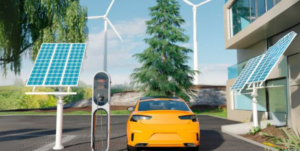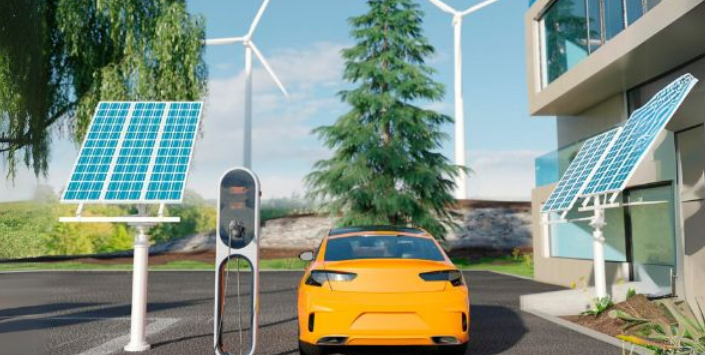Developing a solar-powered charging station for rural areas involves creating a reliable, cost-effective, and scalable solution that can operate independently of the electrical grid. Here’s a step-by-step approach to design and implementation:
1. Define Objectives and Use Cases
- Primary Purpose: Provide electricity for charging small electronic devices such as mobile phones, LED lamps, radios, and possibly larger devices like laptops.
- Target Audience: Residents in rural or off-grid areas, schools, healthcare centers, and small businesses.
- Scalability: Should be modular to accommodate growing energy needs over time.
2. Key Components
The main components of a solar-powered charging station include:
A. Solar Panels
- Selection Criteria:
- Wattage: Calculate based on energy demand (e.g., 100W–500W panels for small stations).
- Efficiency: Higher efficiency panels (monocrystalline or polycrystalline) are preferred.
- Durability: Ensure panels can withstand local weather conditions (e.g., rain, dust, or heat).
- Installation: Panels should be installed at an optimal tilt angle and orientation for maximum sunlight exposure.
B. Charge Controller
- Function: Regulates voltage and current from the solar panels to prevent overcharging or damage to the battery.
- Recommendation: Use a Maximum Power Point Tracking (MPPT) controller for improved efficiency.
C. Battery Storage
- Purpose: Store solar energy for use during cloudy weather or nighttime.
- Types:
- Lead-acid batteries (cost-effective but heavier and less durable).
- Lithium-ion batteries (lighter, more efficient, and longer lifespan but higher upfront cost).
- Capacity: Calculate based on daily energy consumption and backup duration (e.g., 12V, 100Ah battery).
D. Inverter
- Purpose: Converts DC power from the battery to AC power for devices that require AC input.
- Rating: Choose based on expected load (e.g., 300W for small devices or up to 1kW for larger setups).
E. Output Ports
- USB Ports: For charging mobile phones and small devices.
- AC Outlets: For devices requiring 110V/220V AC power.
- DC Ports: For LED lights or other DC-powered devices.
F. Weatherproof Enclosure
- Protects batteries, controllers, and other electronics from environmental damage.
- Ensure ventilation to prevent overheating.
3. System Sizing
- Energy Demand Calculation:
- Estimate daily energy usage (e.g., 10 mobile phones × 10Wh = 100Wh/day).
- Solar Panel Sizing:
- Calculate based on energy needs and sunlight availability (e.g., 4 peak sun hours/day).
- Formula: Solar Panel Wattage=Energy Demand (Wh)Sunlight Hours (h)\text{Solar Panel Wattage} = \frac{\text{Energy Demand (Wh)}}{\text{Sunlight Hours (h)}}.
- Battery Sizing:
- Ensure the battery provides sufficient storage for at least one day of backup power.
- Formula: Battery Capacity (Ah)=Energy Demand (Wh)Battery Voltage (V)\text{Battery Capacity (Ah)} = \frac{\text{Energy Demand (Wh)}}{\text{Battery Voltage (V)}}.
4. Installation Considerations
- Site Selection:
- Choose a location with maximum sunlight exposure.
- Secure the area to prevent theft or damage.
- Mounting Structure:
- Use sturdy, corrosion-resistant materials for the solar panel frame.
- Ensure the structure can withstand local weather conditions.
- Wiring:
- Use weatherproof cables with minimal voltage drop.
- Install proper fuses and circuit breakers for safety.
5. Design Features
- Modularity: Allow the system to be expanded with additional panels and batteries as energy demand grows.
- Mobile or Fixed: Decide whether the station will be portable (e.g., mounted on a cart) or fixed in one location.
- User Interface:
- Simple indicators (LEDs) for battery charge status and power availability.
- An optional display for more detailed metrics (e.g., voltage, current, and energy usage).
6. Maintenance
- Cleaning: Regularly clean solar panels to remove dust and debris.
- Battery Maintenance: Check and replace batteries as needed (especially for lead-acid batteries).
- System Checkups: Inspect connections, cables, and fuses periodically.
7. Cost and Funding
- Estimated Cost:
- Solar Panel: $50–$200 (depending on wattage).
- Battery: $100–$300.
- Charge Controller: $20–$50.
- Inverter: $50–$100.
- Enclosure, wiring, and miscellaneous: $50–$100.
- Funding Options:
- Microfinancing for rural entrepreneurs.
- Government subsidies or grants for rural electrification.
- Partnerships with NGOs or development agencies.
8. Environmental and Social Benefits
- Sustainability: Reduces reliance on fossil fuels and provides clean energy.
- Accessibility: Empowers rural communities by providing reliable electricity.
- Economic Impact: Supports local businesses, education, and healthcare.
9. Advanced Features (Optional)
- IoT Integration: Monitor system performance and energy usage remotely via mobile apps.
- Solar Tracking: Use solar trackers to maximize energy generation (optional for larger systems).
- Pay-as-You-Go Model: Include prepaid meters for shared systems in communities.
Example Use Case
- Scenario: A rural village with 20 households.
- Solution: Install a 500W solar system with a 12V, 200Ah battery. Each household can charge devices using USB ports and access DC lighting. The system is scalable, allowing additional panels and batteries to be added as needed.
Would you like detailed guidance on any specific aspect, such as the electrical design, cost estimation, or assembly process?

Also Read :
- The Future of Renewable Energy: Advancements in Solar Panel Efficiency
- The Rise of Solar Skins: Aesthetic Solar Panels for Urban Sustainability
- Creating a Portable Device to Measure Air Quality Levels
- Sustainable Urban Planning: Engineering for Smart Cities
- Harnessing Ocean Currents: Research into Marine Energy Technologies
